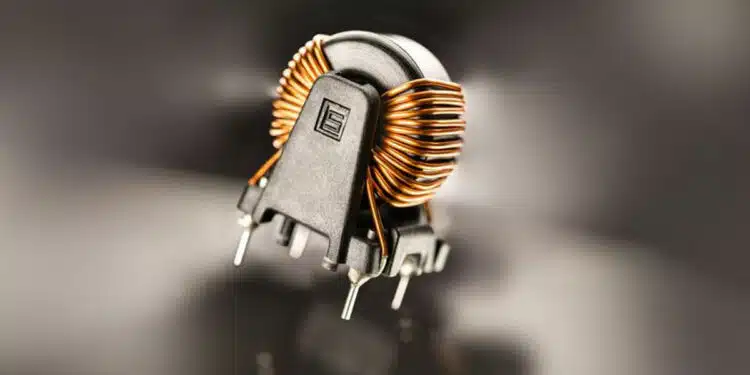SCHURTER is launching a new, vertically mountable inductor choke family for PCBs with very high inductances.
The DKCV-1 current-compensated chokes are designed for currents from 0.5 to 10 A. Thanks to their nanocrystalline cores, the new chokes have very high inductances with particularly compact dimensions.
Powerful applications in the energy sector are becoming increasingly compact. This compact design combined with high energy efficiency leads to an increase in electromagnetic interference in modern electronic devices.
Powerful filter elements are required to suppress this interference. Due to the compact dimensions, the integration of the filter elements on printed circuit boards is an ideal solution. The new DKCV-1 choke series is particularly suitable for applications that require high attenuation.
High performance in a compact design
The nanocrystalline cores enable very high currents with extremely compact dimensions. Thanks to the vertical choke arrangement, they also require very little space on the PCB. All variants of the DKCV-1 family have the same footprint on the PCB.
Applications
The new chokes are ideal for demanding applications that require high inductance with compact dimensions. These include switching power supplies, industrial, medical, laboratory and test equipment. The chokes are suitable for currents up to 10 A and voltages up to 300 VAC or 450 VDC and have ENEC, cUR and UR approvals.
For higher power applications, the DKIV-1 series of chokes is available with rated currents up to 50A.
Features
- Current compensated 1-phase choke
- Nanocrystalline cores
- THT-terminals
- Flange for mounting onto printed circuit board
- Very high inductance
- Compact design with a small footprint
- Open design optimizes heat dissipation
- Optional customized versions
Applications
- Switching power supplies
- Medical equipment
- Laboratory equipment
- Test equipment
- Frequency inverters






























